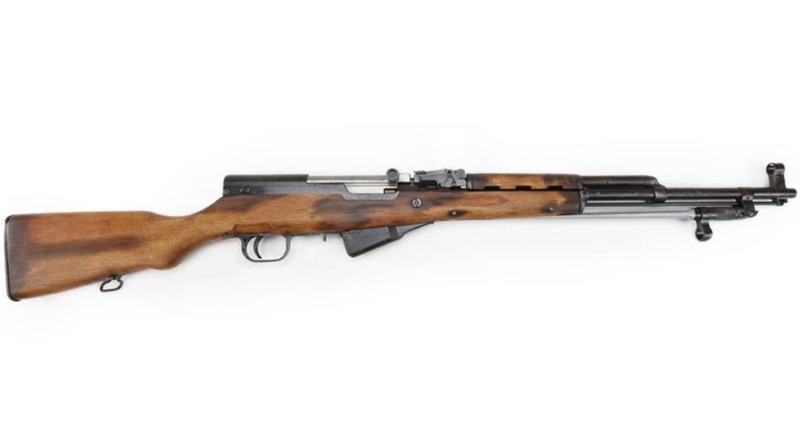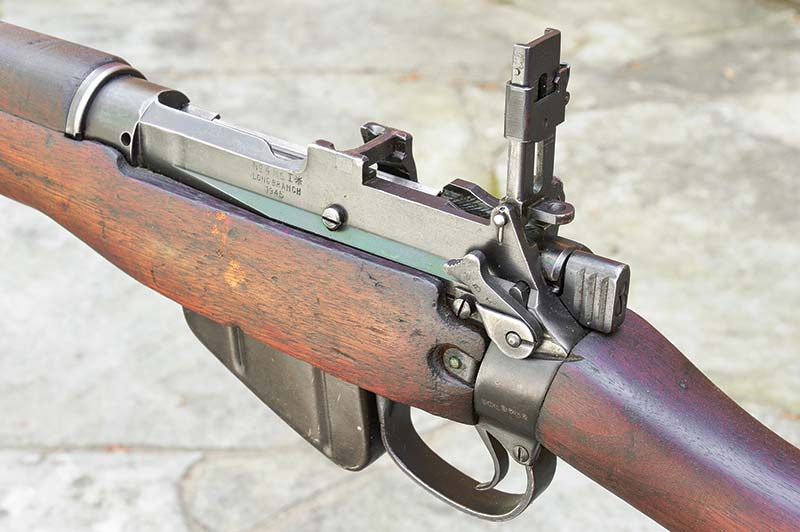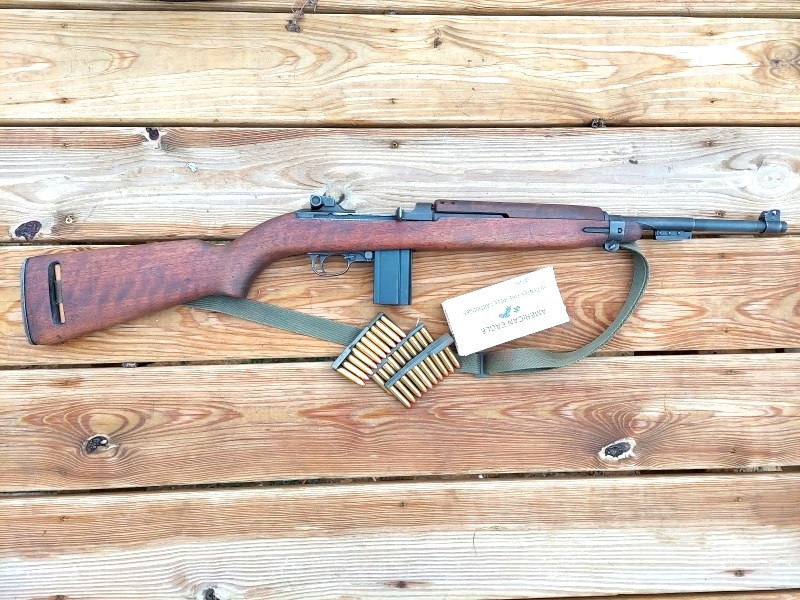Military surplus rifles can be so satisfying to own. Every time I pick one up, I can’t help but wonder where it’s been, who used it, an what it’s seen and done. My soft spot is for World War II weapons, but I find all military arms to be interesting.
Have you ever wondered what some of the advantages are to owning milsurp firearms? And which ones might be the best? We’ll try to give you some answers.
Advantages
Military surplus rifles can be a welcomed change of pace from today’s polymer firearms. Sometimes I feel as though I have “Polymer Fatigue.” The same old thing gets…well, old. In some cases, milsurp rifles can be found for very reasonable prices too.
Many people are mesmerized by the historical aspect of these rifles. They can really excite the imagination. Aside from that, these old rifles are still useful for various things. Certainly, they are still useful for defense. Some of them are used in competition.
Typically, Military surplus rifles are made of heavy wood and steel and are amazingly durable. With most of them, if you run out of ammunition, you can use the empty rifle to club the enemy with.
Without further adieu, let’s take a look at some rifles that are out there. This is a short list of some candidates, but there are a lot more out there. If yours isn’t on this list, don’t despair!
SKS Carbine
The SKS was introduced in 1945 and designed by Sergei Simonov. Initially, this rifle was produced in the Soviet Union, but since then, many countries have produced the design, including China.
The SKS is a semi-automatic, gas-operated design that uses a piston. It fires from a fixed 10-round magazine that can be loaded with stripper clips. Typically, a folding bayonet is permanently attached near the end of the barrel. The normal barrel length is 20 inches, although shorter barrels on some models exist.

Although it was replaced by the AK-47 decades ago, examples can be found around the world’s battlefields even today.
A short, handy rifle, the SKS is very popular with American shooters. The 7.62x39mm round, which fires a 123-grain bullet about 2,350 feet per second, is both plentiful and economically priced. Back in the 1990s, an SKS could be purchased for around $100. These days, they are fetching quite a bit more than that, but they’re still somewhat reasonably priced compared to other Military surplus rifles.
Today’s prices command somewhere between $500 and $1,000+, depending on the origin of the rifle. Authentic Russian copies are worth more and command higher prices.
They are fun to shoot, given their modest recoil. However, they are not usually terribly accurate past 100 yards. Nevertheless, as a defensive arm at closer ranges, the SKS can certainly hold its own. And if you’re looking for a neat piece of history, they’ll certainly fill the bill!
M1 Garand
Deemed by General George S. Patton to be “The greatest battle implement ever devised”, the M1 Garand is still soldiering on. Considering that it was introduced in the late 1930s, that’s quite a testament. In fact, it was January 1936 that the Garand was officially adopted.
The Garand was America’s main rifle through World War II, defeating Germany, Japan, and all the Axis forces. The Army issued it first, followed by the Marines. It went on to serve in Korea, Vietnam, and a few other conflicts.
The rifle operates using a rotating bolt and locks into place via two locking lugs. The M1 is the first rifle to have a gas tube made from stainless steel.
The Garand is a fairly complex rifle, which is a drawback.

The M1’s sights are among the best of any rifle on the planet. They’re aperture, being adjustable from 100 to 1,200 yards.
Feeding the .30-06 caliber rifle is accomplished via 8-round En Bloc clips. Fortunately, millions of these clips have been made, so they’re still available.
The M1 was made by several manufacturers, including Springfield Armory, Winchester Repeating Arms, International Harvester, and Harrington & Richardson.
Garands are available through the DCM (Department Of Civilian Marksmanship) if you’re willing to navigate some steps in the process.
Firing the M1 is a fun experience; the recoil is largely absorbed by the recoil system. They’re fairly accurate. The En Bloc system is neat and when the clip is ejected, it’s pretty cool. They’re certainly useful for self-defense, despite being an “antiquated” design. They’re also reliable and well-built.
Prices these days seem to start around $1,000.
Lee-Enfield SMLE
The Lee-Enfield served through World Wars I and II, not to mention a host of other conflicts. It served from 1904 into the 1970s.
The MK III (No. 3) was introduced prior to WWI, where it served with distinction. WWII saw mostly the No. 4 Lee-Enfield, although some MK IIIs were still serving in that war, given the shortage of weapons that the British were facing.
They were chambered for the .303 British round, which fired a 174-grain bullet approximately 2,440 feet per second.
The No. 3 and No. 4 Enfields hold ten rounds in their magazine. The magazines are removable. However, the common practice was to keep the magazine in place and reload the rifle via 5-round stripper clips.

The actions of these rifles are commonly very smooth and among the fastest to operate of any bolt action in existence. I’ve owned several over the years, and each one was perfectly reliable. They are robust rifles, built to take massive abuse.
The sights on the No. 3 left a little to be desired, considering they were of the buckhorn variety—not exactly the best for long-range target engagement. Improvements were made to the sights of the No. 4 Enfields, however. Most of them are of the aperture style. Some even have a micrometer, ladder-style sight that can be adjusted to over 1,000 yards.
The Lee-Enfield is a soft-shooting rifle with good accuracy. They are on the heavy side, however. But very robustly built. All in all, they’re a lot of fun to shoot.
Prices in the past couple of years have shot up sharply on these rifles. It’s hard to find one under $500 these days, and many are going for well over $1,000.
Mosin Nagant
This 5-shot bolt action design is chambered in 7.62x54R, a Russian cartridge that is somewhat similar to our .30-06 Springfield round. The Mosin Nagant was used widely by the Russians in World War II.
The design was originally developed in 1891 and went through several refinements until the model 1891/30 was arrived at, which was mostly used during WWII.

These rifles are long and heavy, for the most part, and very robustly built. Made to function in muddy combat conditions, they are not likely to let the shooter down when things get tough. They are also easy to field strip and maintain, as most Russian weapons are. The fact that it’s a bolt action means it’s even more simple than most. Most Mosin Nagant rifles are considered to be fairly accurate, as well, which is an added bonus for the platform.
There are also M38 and M44 carbines, which have shorter barrels. Beware, though; they have a good bit more recoil because of their lighter weight.
Countries other than Russia that made the Mosin include China and Finland. The Finnish examples are said to be the most nicely finished ones (no pun intended).
Current prices vary widely, with examples going from around $100 to over $1,000 for certain models. Some models are in premium condition or are rare, so prices are applied accordingly.
M1 Carbine
During WWII, the US military was looking for a weapon for support personnel that provided more firepower and range than the 1911 .45 ACP pistol, but that weighed less than the M1 Garand.
They eventually settled on the M1 Carbine, which weighed about 5.5 pounds and fired the .30 Carbine cartridge. They used this weapon to equip cooks, radio men, mortar crews, artillery crews, paratroopers, machine gunners, armored crew members, truck drivers, and others—anyone who needed a light, shoulder-fired weapon.
The .30 Carbine fired a 110-grain bullet approximately 1,990 feet per second.
Over six million of the little carbines were produced by companies including Rock-O-La Jukebox, the Inland Division of General Motors, IBM, and the Underwood Typewriter Company.

After WWII, the carbine served in Korea and then Vietnam, along with a host of other wars.
They’ve been popular ever since. Shooters today like them for the same reason our servicemen did; they’re very light and have little recoil. They’re also incredibly fun to shoot! Reliability and durability are also factors that add to this design and make it desirable.
These days, it’s not uncommon for an M1 Carbine to fetch $1,000 and above, depending on how rare the model is and other factors.
In Summary
This small list certainly doesn’t cover all of the Military surplus rifles out there to choose from. However, it’s a good starting point. Prices range from just a few hundred dollars to many thousands, should the collector wish to get into the hobby that deeply.
Be careful—it’s a rabbit hole that can really suck you in! But you’ll have a lot of fun doing it, of that I’m sure.
If you enjoy nostalgia and very usable firearms, the surplus market is certainly the way to go. It may take a while to find just what you’re looking for, but as they say, the hunt is half the fun.
Let us know what your favorite Military surplus rifles are in the comments, we’d love to hear from you!


